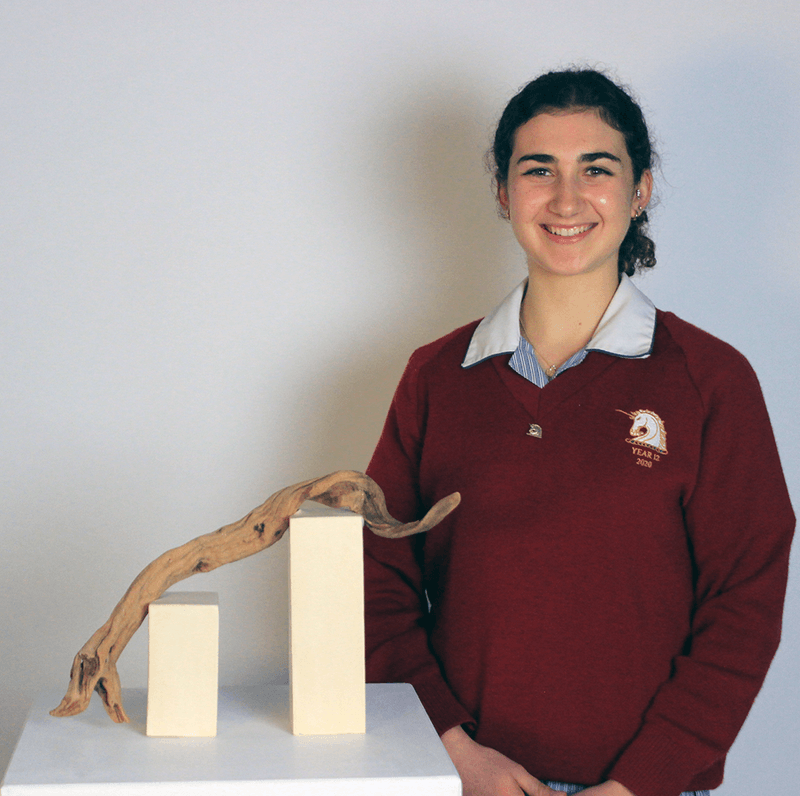This study is based on inquiry learning. Students explore, develop and refine the use of materials, techniques and processes through the study of artists and artworks.
Students progressively document the development of their work in a Visual Journal and present a critique to their peers and critically reflect on their art making.
The study of art galleries, museums and other exhibitions spaces is integral to the course and for students to understand how artworks are displayed, conserved and exhibitions are curated.
Explore, expand, and investigate.
This unit is based on an inquiry learning process to experiment with and explore the inherent characteristics and properties of materials, their purpose and historical development and how they can be manipulated to develop subject matter and represent ideas.
Students progressively document the development of their art making in a Visual Arts Journal to present one finished artwork based on a set theme.
Areas of Study
- Explore record and document art making in a Visual Arts journal using written and visual material.
- Develop at least one finished artwork based on a set theme and developed from the experimental works they have completed.
- Research the work of Australian and Indigenous artists and present a proposal for an exhibition.
Understand, develop and resolve.
This unit of work involves the investigation of how artists use art elements and art principles to develop aesthetic qualities in an artwork.
Students progressively document the development of their art making in a Visual Arts Journal to present one finished artwork responding to a set theme.
Areas of Study
- Select 3 artworks viewed at an exhibition and 3 additional artworks to design a thematic exhibition based on research of the artists, and the roles associated with planning exhibitions.
- Development of experimental artworks based on a selected theme and exploring the use of art elements, principles and aesthetic qualities.
- Progressively document art making to develop subject matter and ideas in one finished artwork.
Collect, extend and connect
This unit is based on an inquiry learning process to engage students in exploring the use of materials, techniques and processes in a specific artform.
Students collect a variety of ideas and inspiration to inform their experimentation and exploration of subject matter, ideas and technical skills to develop imaginative and creative artworks.
Students visit exhibitions as a source of inspiration and to research the role of the curator in planning and presenting and exhibition.
Areas of Study
- Select 3 artists to research and use as inspiration to develop subject matter and ideas and to understand how materials, techniques and processes are used. Documentation of experimentations with materials and techniques to develop subject matter and ideas in a Visual Journal
- Present two artworks and selected experimental and developmental work to present a critique and a written reflection.
- Research and plan an exhibition of the artworks of three artists used for inspiration.
Consolidate, present and conserve
In this unit of work students refine and resolve at least one finished artwork based on the ideas explored in Unit 3.
Students document the characteristics and properties of the materials techniques and processes used in making their finished artworks. An investigation of the methods used for the conservation and care of their artworks is recorded in the Visual Arts Journal.
Areas of Study
- Refine and resolved at least one artwork in a specific artform and document the materials, techniques and processes used. An investigation into the conservation and care of their work is documented in the visual journal.
- Plan and display at least one finished artwork and present a critique and a written reflection.
- Prepare a case study based on research about the conservation and care methods that have been used in an artwork selected from an exhibition and a finished artwork of their own.

The images selected here are works by Phoebe Thompson (2021) whose folios were both selected and exhibited at the NGV as part of Top Arts.
What kind of learner is best suited to study this subject?
Innovative, critical, and analytical thinker, inquisitive and practical. A visual problem solver.
What key skills are required for success?
Adaptability and risk taking to experiment with materials, techniques and processes. Being organised and curious is important. If you like creating and discussing artwork then you will enjoy this subject.
What are the learning activities in this subject like?
Independent and collaborative tasks, viewing and discussing artworks and visiting exhibitions to learn about exhibition curation and design.
Studies in VCE Art can lead to study and career options in the following areas:
Animator, Art gallery assistant, Art gallery director, Art historian, Art teacher, Art therapist, Artist, Arts administrator, Cartoonist, Ceramic artist, Conservator, Craftsperson, Fashion designer, Filmmaker, Graphic designer, Illustrator, Interior designer, Jewellery designer, Patternmaker, Photographer, Sculptor, Tattooist, Teacher, Visual merchandiser




